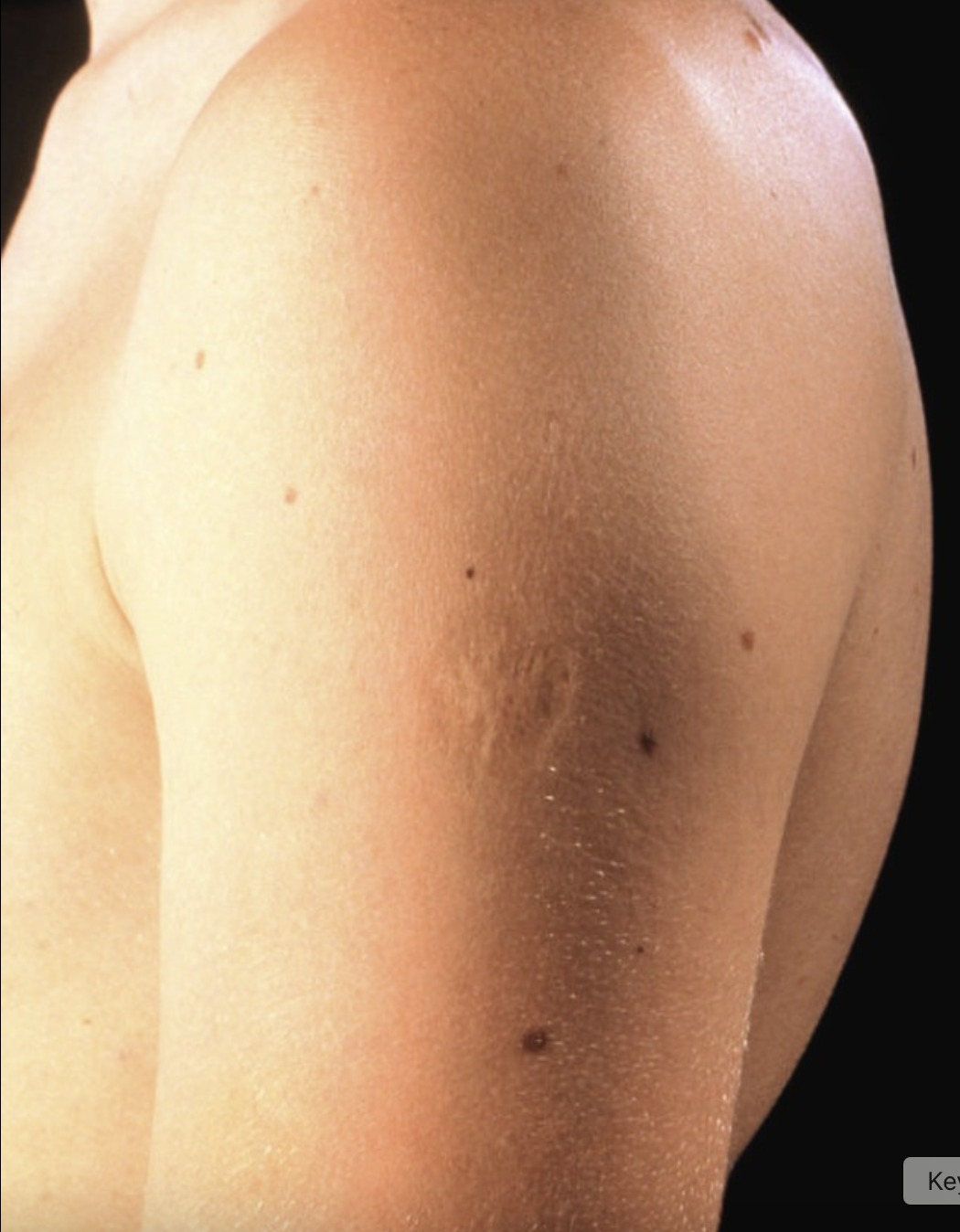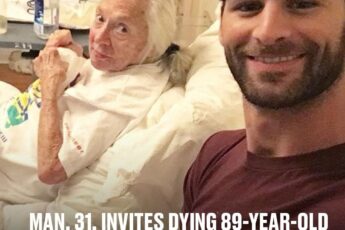I have a clear memory of noticing a distinct scar on my mother’s arm when I was a child. It sits high up, close to her shoulder, in a place that isn’t always visible, but when she wore certain clothes—tank tops in the summer or dresses with thin straps—it was there, quietly present, almost like a mark she carried without ever drawing attention to it. To my young eyes, it was unlike any of the scrapes or bruises I collected from playground adventures or falling off my bicycle. This scar had a pattern, an odd kind of symmetry, that made it stand out. It took the appearance of a ring of small indents, perfectly arranged, circling around a larger, deeper indent in the center. It didn’t look accidental, not the way most scars do. Instead, it looked intentional, almost as if it had been placed there by design. I remember being fascinated by it, staring at it when I thought she wouldn’t notice, wondering what it meant or how it came to be. It was both mysterious and oddly comforting, a reminder that my mother, who seemed so steady and unshakable, had her own hidden stories written into her skin.
I can still picture how the scar would catch the light. When we sat outside during warm afternoons, she would rest her arm on the porch railing, and the sunlight would draw out the subtle difference in texture between the scarred skin and the smoothness around it. To me, it was almost like a secret badge, one that suggested she had lived through something I didn’t yet understand. I couldn’t help but imagine stories around it. Maybe she had been in an accident, or perhaps it was the mark of some childhood adventure gone wrong. My imagination spun wild tales—she had been bitten by a strange animal, or maybe it was the result of some mysterious medical procedure. Of course, I never had the courage to ask too many questions, and when I did tentatively bring it up once or twice, she brushed it off with a small smile or a simple “Oh, that’s from a long time ago,” before changing the subject. Even then, I sensed it wasn’t something she wanted to talk about in detail.
Don’t ask me why that specifically attracted my attention all those years ago; I can’t pin down what made that scar, out of all the countless details of her, stand out to me in such a sharp way. Maybe it was the strangeness of its shape, or maybe it was because it seemed so different from the marks I was used to seeing on myself. Children notice things adults forget to notice—like the way dust dances in the sunlight or how certain shadows stretch long across the ground—and perhaps the scar was simply one of those small mysteries that demanded my curiosity. I don’t remember the exact moment my eyes first landed on it, but I do remember the feeling it left behind, the quiet realization that my mother had lived a life before me, a life that carried its own marks and memories, some of which I might never fully know.
Over time, though, as the years rolled forward, that sharp awareness faded. I recall only that the scar mattered to me once, that it occupied my mind as a small puzzle I wanted to solve, but the answer never came. Like so many things in childhood, it simply drifted into the background. Life became busier. School demanded my attention, friendships grew and changed, and my world expanded beyond the walls of home. The scar, once a vivid point of fascination, became something I hardly noticed anymore. It was still there, of course, still quietly etched into her skin, but my awareness of it dulled. Days turned into years, and it became just another detail of my mother’s presence, blending seamlessly into the whole of who she was.
And yet, every now and then, I would catch sight of it again. Maybe she would be reaching for something on a high shelf, her sleeve slipping back, or maybe I’d see it when she tied her hair up, her arm lifted in a way that revealed the mark. In those brief moments, the memory would stir, and I’d be reminded of that childlike curiosity I once felt. For a second, I’d wonder about it again—where it came from, what story it held—but then the thought would pass. Life has a way of pushing those small mysteries aside, until they become just fragments of memory, resting quietly in the corners of our minds, waiting for us to rediscover them.
I sort of forgot it existed over the following years, though “forgot” might not be the right word. It was more like it became invisible to me, the way familiar things sometimes do. We stop seeing what we’ve grown used to, even when it’s right in front of us. The scar was part of my mother, just like her laugh, her handwriting, or the way she brushed crumbs from the table with the side of her hand. It belonged to her, but it no longer stood out. It became one of those details you only notice when you pause and really look, and as a child growing into adulthood, I didn’t pause often enough. Still, the memory of that first discovery remains with me, clear as day, reminding me of how children see the world differently—how they notice the quiet, overlooked details that adults often let slip away. And maybe that’s why the scar has lingered in my mind all these years, not because of what it was, but because of what it meant: a reminder of curiosity, of hidden stories, and of the way love and mystery can live side by side in the smallest, most ordinary details of someone we hold dear.






